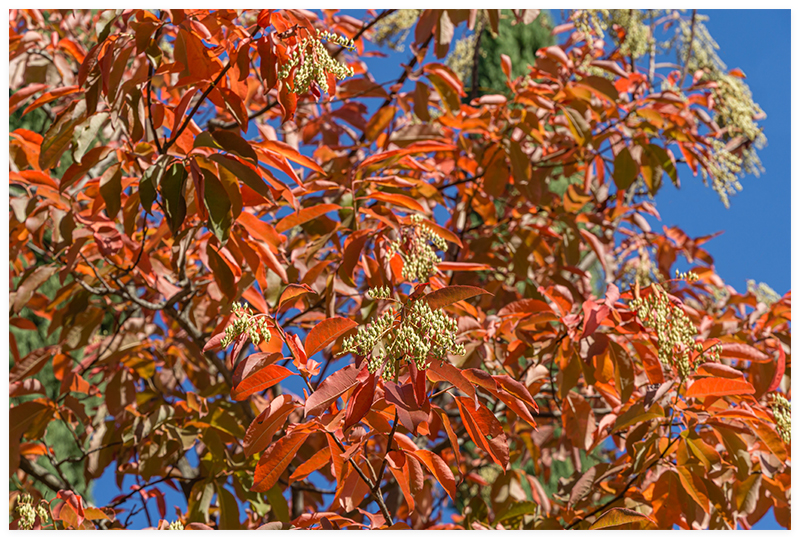Sourwood (Oxydendrum arboreum)
Sourwood (Oxydendrum arboreum): Native to the rocky, wooded slopes of Western North Carolina, this tree offers up brilliant red foliage in the fall

- Sourwood trees can grow twenty to thirty feet high, and expand to a diameter of twelve to fifteen inches. The main trunk may fork into two or more leading trunks, zigzagging outward and upward. You’ll spot it easily by its distinctive lean.
- Fragrant sprays of small white flowers bloom in late spring and early summer. Sourwood honey is light amber, with a distinctive flavor of anise and spice, and has won best honey in the world three times at the prestigious Apimondia World Honey Show
- The tree’s leaves are edible, and tea made from them is widely recognized as a treatment for gastrointestinal ailments. It’s also used as a thirst-quencher by mountain climbers.
- Chewing the bark is credited for soothing intense mouth pain, and the sap has been a proven remedy for fevers.
- The sourwood is considered to be an endemic plant, meaning that they are not found outside of North America unless planted, and have no related species.